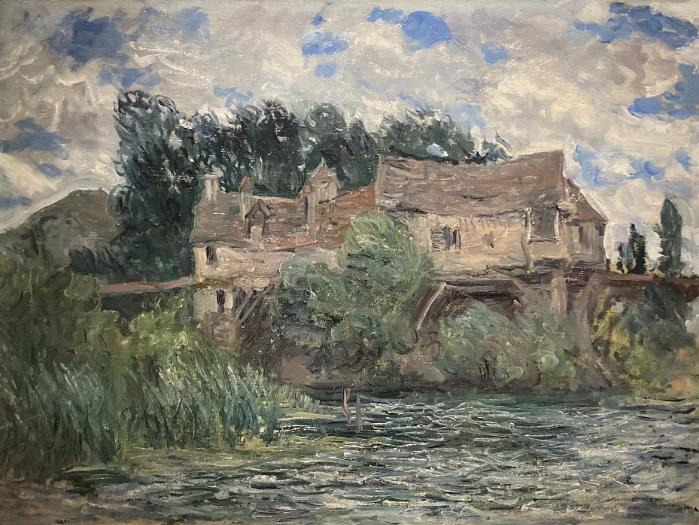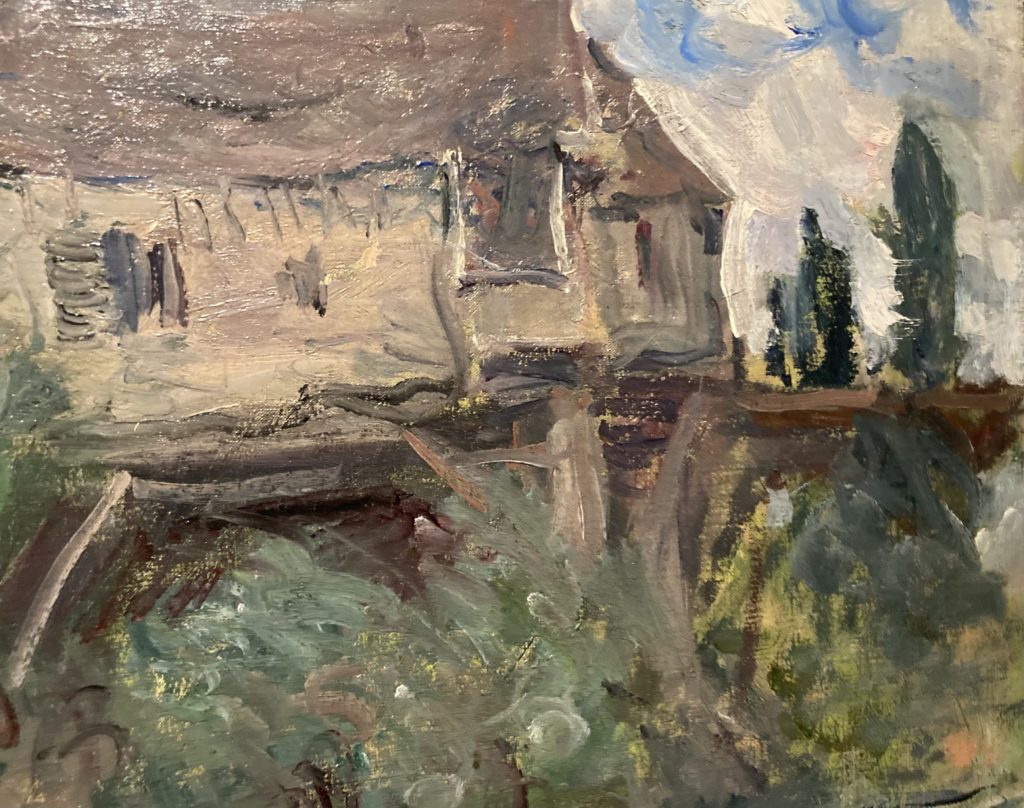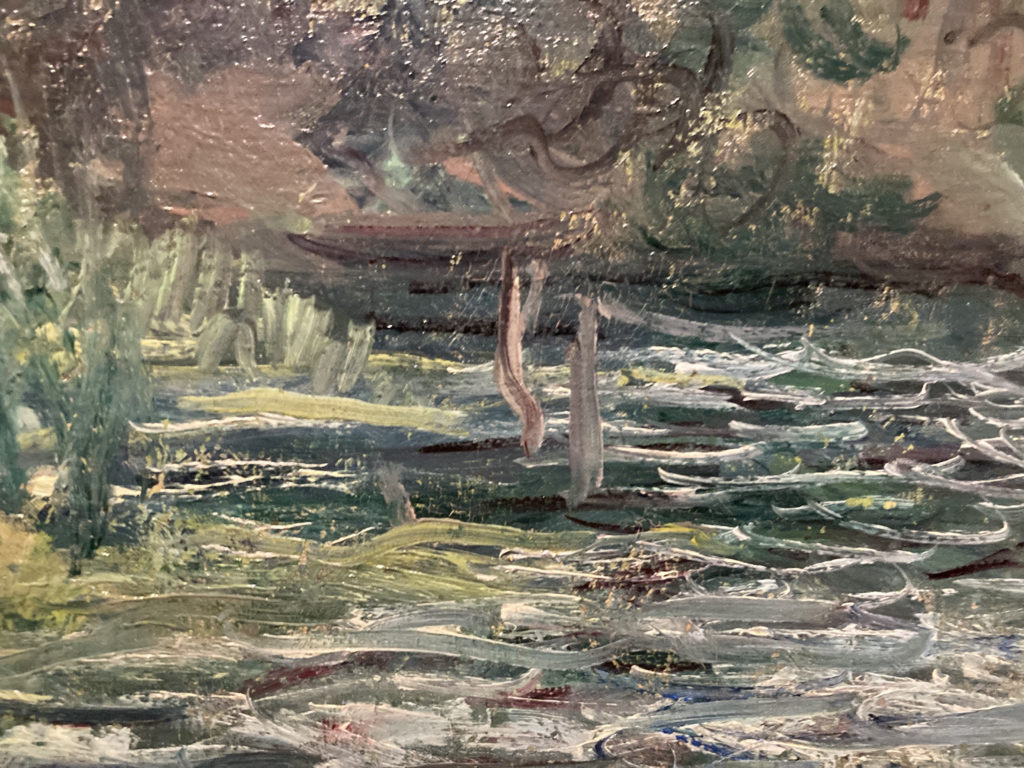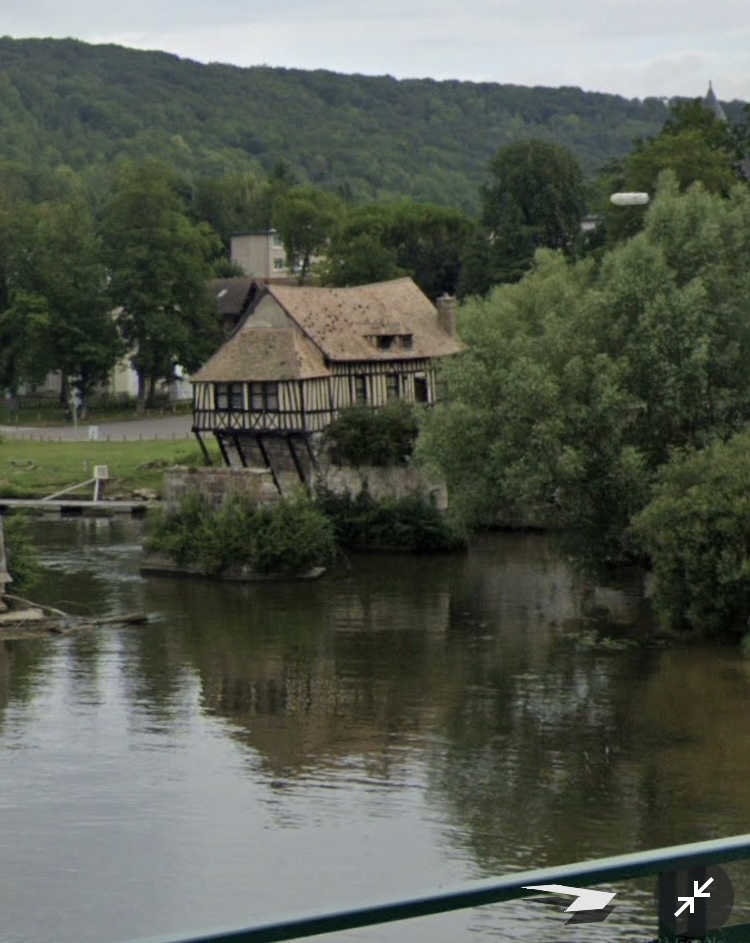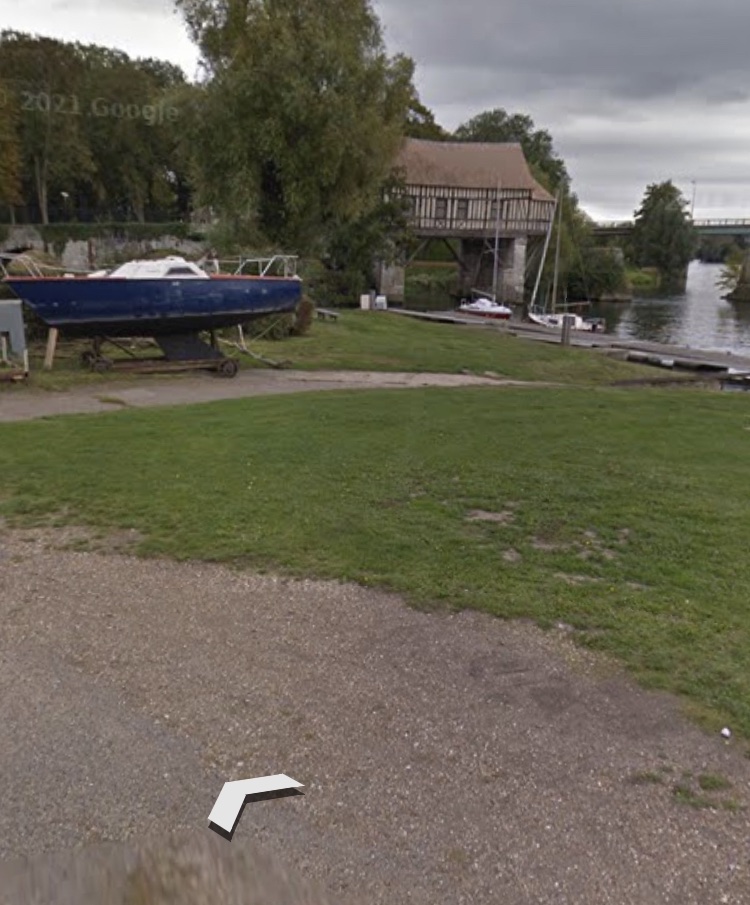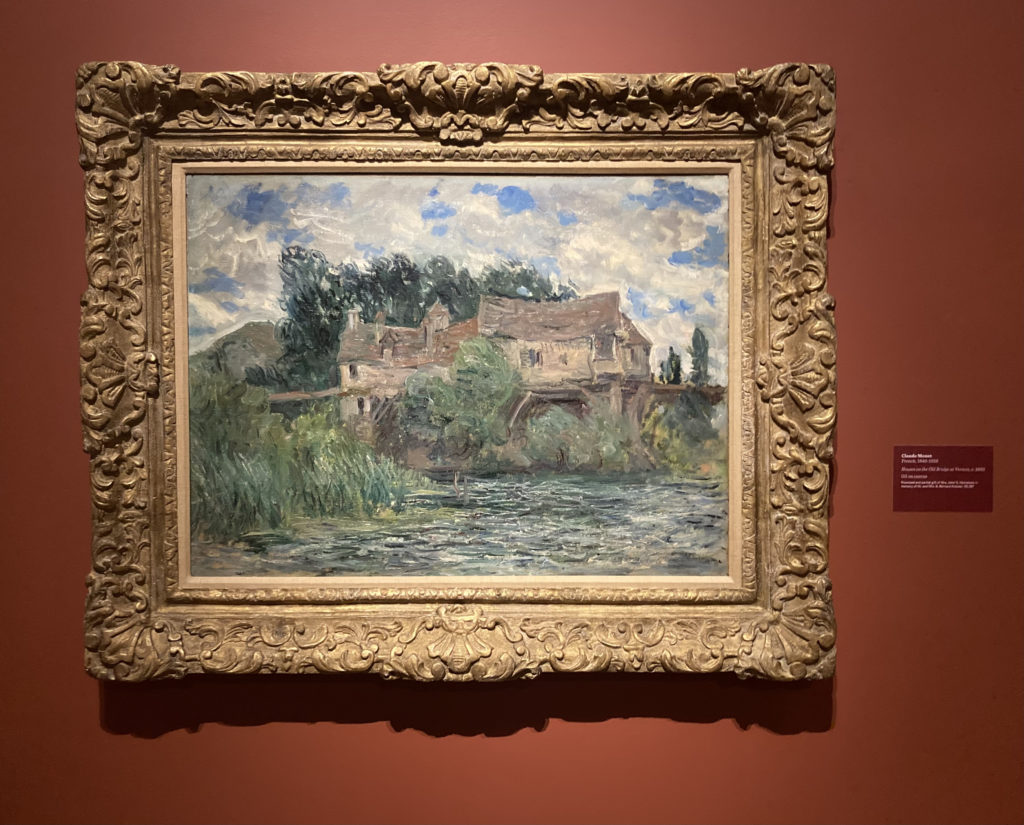I visited New Orleans Museum of Art one last time in 2022. “Whaaat?!” I said, under my breath when I saw an unfamiliar painting in the Impressionist gallery. “You sly devil,” I said to the painting or maybe to Monet himself. This canvas did not look like a typical Monet, but also it did with its cerulean sky, puffy clouds, wide variety of greens, a variety of brushstrokes. The way the water was articulated, deep blue and a surface–both the surface of the water and the surface of the painting–of horizontal skittering white marks was all Monet. The main reason the painting didn’t look to me like a Monet, other than the fact that I had never seen it before, was the main subject and how it was painted. The big, sagging beige-ish brownish structure was quite un-Monet-ish. The wall label read “Houses on the Old Bridge at Vernon, c. 1883.”
I wanted to know more. At the information desk, where I took my half-formed questions, I was given the email address of the curator of paintings who the attendant said might be able to help. Unfortunately, the only thing I could think of to ask was, “What’s up with this painting?”
That night I Googled “Vernon, Monet.” According to Atlas Obscura, the main building in the painting, a mill, was still standing. An article on Kuriositas goes into even more detail about the mill but does not have much information about the painting. Then, I opened Google Maps. I have a Google Steet View fetish and I was giddy seeing the mill in that virtual space after studying it earlier on the museum wall. I lurked the environs of the mill, wander-clicking back and forth, zooming in and out to find every angle with a view.
Speaking of distracted, I had a feeling that Monet had been distracted while painting the buildings on the bridge. The brushstrokes, traces of physical gestures, seem slightly out of character for the artist. His energetic scumbling usually conforms to an underlying logic. Maybe Monet was not only distracted but irritated. There are some atypical splotches and hard edges. The color of the house would be at home in a Giorgio Morandi or Luc Tuymans, but in a Monet, in this painting, it looks a little anemic. Maybe the weather was not cooperating as Monet painted the scene, or a fly was buzzing around, or maybe things just weren’t going right in the painting. The painting shows struggle. It could be that this painting was not even finished, that the artist wouldn’t have wanted it hung on a wall. Maybe this is the question I should ask the curator.
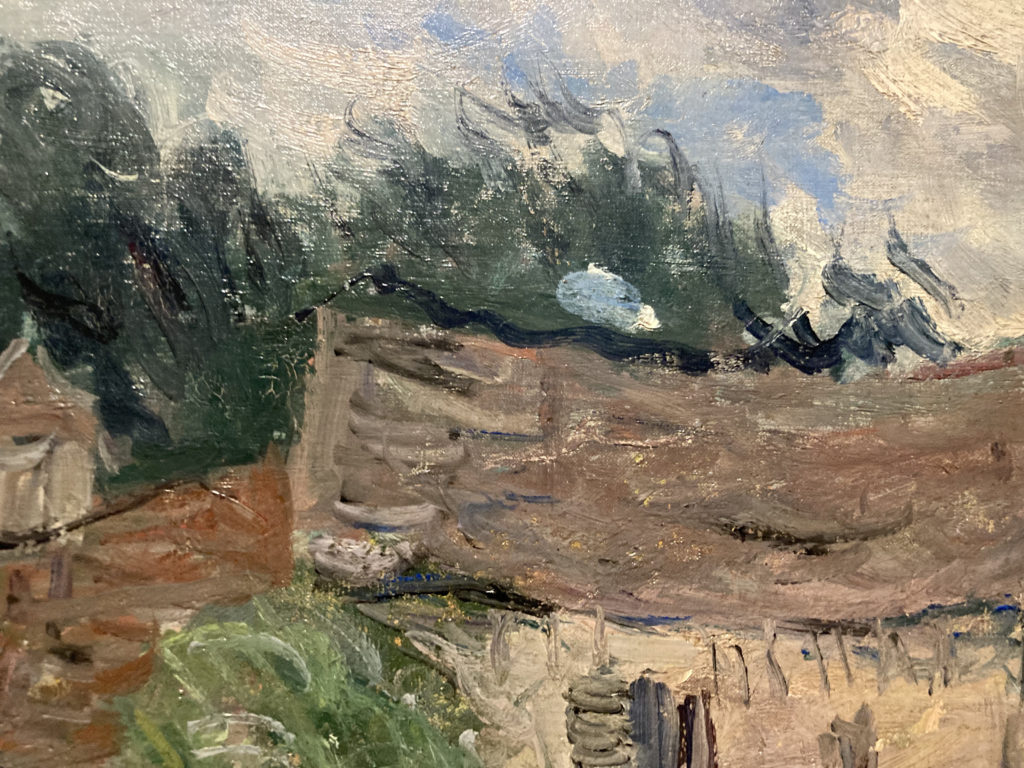
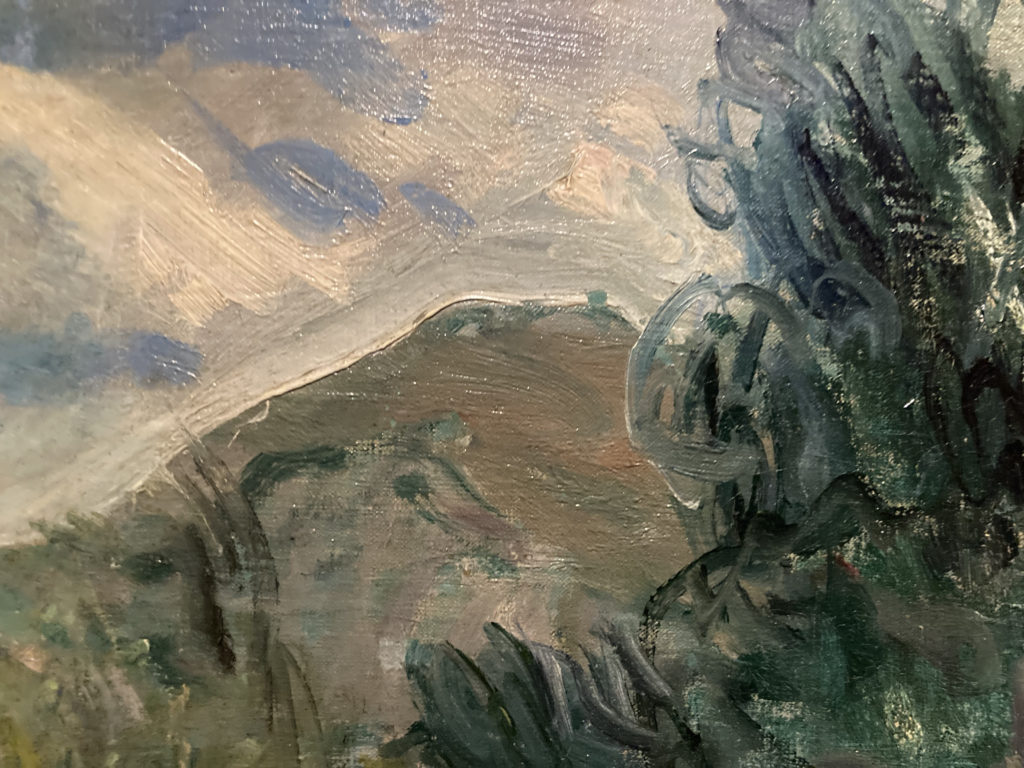
Could it be that Monet didn’t like painting architecture? No. He painted Rouen Cathedral and other buildings over and over. (Rouen was as much about light as architecture.) In 2018, Richard Thomson curated the exhibition Monet and Architecture at the National Gallery. In a short video advertising the exhibition, following one of those bizzarro “immersive” animations (please stop) of Houses on the Old Bridge at Vernon, is a quote by Monet:
I want to paint the air that surrounds the bridge, the house, the boat, the beauty of the light in which they exist.
Most of the time Monet accomplished this, but in this case I imagine he lost the thread, that he struggled and the outcome was not excellence. I’m not throwing shade. I like this unsettled, unresolved character of the painting. It’s this B-side or even cutting room floor vibe of the painting that captivates me.
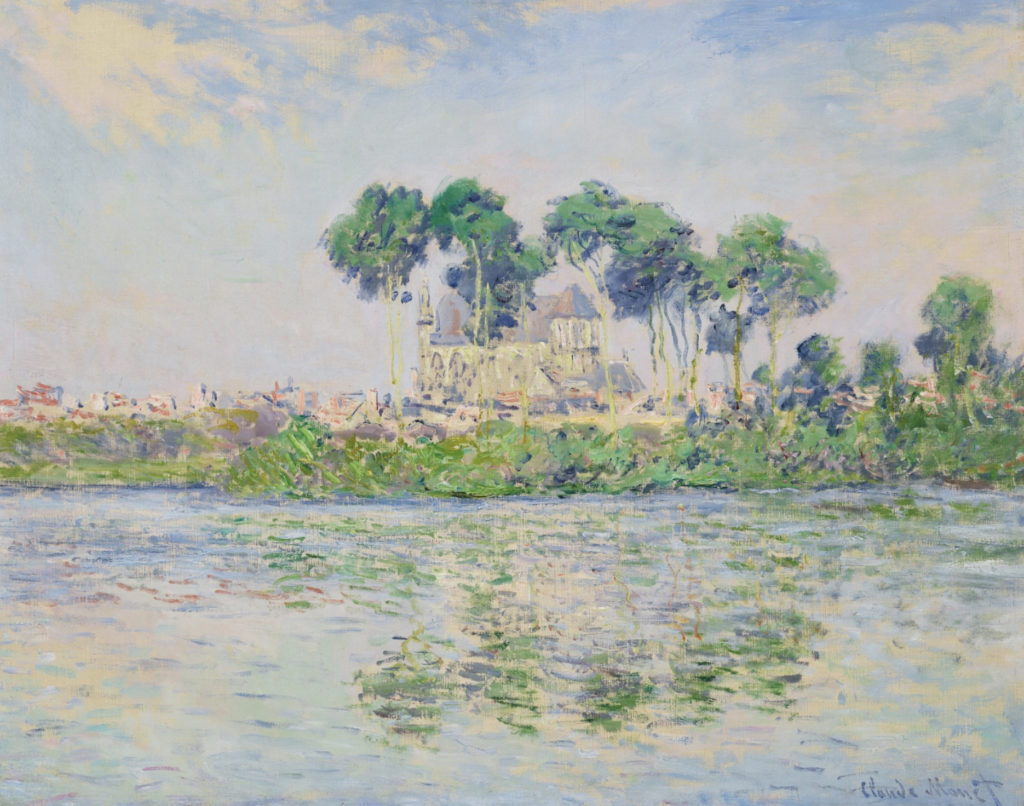
When I was in graduate school at Syracuse pursuing an MFA in Painting, the poet Michael Burkhard agreed to look at some of my poems. I brought a folder, unsorted, to his office. I pulled out a few poems, and set the rest aside, saying something like “these are not good.” Michael paused and said, “Oh, our little mistakes. They never get to grow up and make something of themselves.”
I have never forgotten these words and have never looked at my (or anyone else’s) “not good” work the same way.
As 2022 comes to an end, my final words to this weird Monet painting are, “I think you’re fantastic. You’re really making something of yourself. Keep it up and see you next year.”
